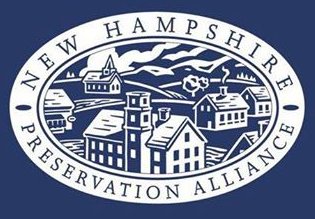Hosted by Sanborn Mills Farm in partnership with the New Hampshire Preservation Alliance
Timber Framing: Introduction to Mortise and Tenon Joinery
Taught by: Lucas Fowler
Workshop Fee: $350.00
In this workshop, students will learn all the skills necessary to layout and cut a timber frame mortise and tenon joint. At the end of the class, the students will assemble the joinery with a hand riven peg that they have made and be able to take the sample joint home.
All the skills and methods used in this class will be invaluable for anyone interested in pursuing timber framing or woodworking of any kind. Although we will be using relatively large timbers (6” x 6”) the knowledge gained can be applied to working wood of any size and scale. We will begin by discussing timber and timber selection including a discussion of species selection, grade, and surface prep.
Students will then learn the different methodologies involved in “laying out” the joinery. This is the process of translating the set of plans onto the timber by drawing lines that represent the joinery to be cut. We will briefly overview several different lay out systems before selecting the most appropriate system. Students will then use that system to create the lines defining the mortise and tenon. We will then use a variety of hand tools and power tools to cut the joinery. Care and safe use of both hand and power tools will be reviewed. Students will be introduced to the chain mortiser, will use a router to create a housing, will clean up the mortise using a timber framing chisel and a mallet, among many other skills and tasks.
Next, students will learn how to create a peg using traditional techniques and tools. We will hand rive a blank and refine the shape to create a peg using a shave horse and a draw knife. Finally, the students, using a technique called “draw bore”, will assemble the mortise and tenon. Any woodworking or carpentry experience is helpful, though not necessary. Enthusiasm for learning and a respect for the tools and techniques is a must!
Skills and Techniques:
Selection and assessment of wood including the ability to orient timbers in a way that achieves structural goals while enhancing visual appeal
Knowledge of different layout techniques used in timber framing
Application of a selected layout technique to draw joinery for a simple mortise and tenon joint
Use of specialized timber framing power tools including a drill guide and a chain mortiser
Use of specialized timber framing hand tools including saws, planes, mallets, and chisels
Ability to assess the quality of a timber frame joint including fitting up and prepping for assembly by drilling for a peg using the draw bore technique
Production of a hand-riven oak peg using traditional timber framing techniques and a traditional shave horse and draw knife
Materials Fee: $30 paid to SMF at the time of workshop.
Special Tools or Equipment: The following tools are not a requirement and substitutions for these items would suffice. However, in the instructor’s experience, these are the specific tools that students can use for the rest of their lives and will serve them well.
A 12″ ruler, specifically:This one
A mechanical pencil, specifically: This one
A tape measure, specifically: This one
The total for these three items is less than $50. The farm provides safety glasses and hearing protection. You are welcome to bring your own if you prefer it. Students should wear clothes and shoes appropriate for working with large pieces of wood and power tools.
